It started out with bears . . .
一切緣起於熊 . . .
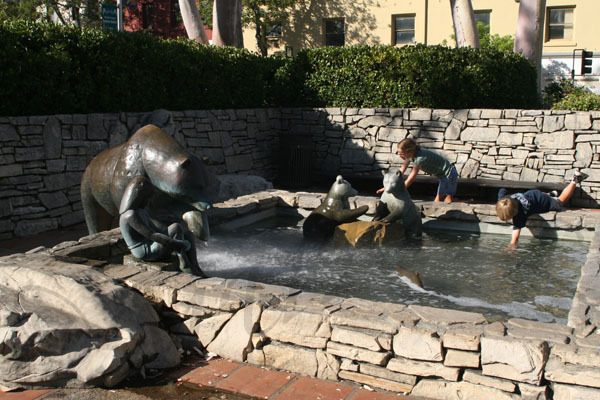
* In front of the Mission San Luis is a shallow fountain with sculptures of bears catching salmon. I thought it was just a common design in a plaza where residents and tourists can hang out. It didn’t occur to me if there was any connection until I read the
聖路易司傳道院前有一個小水塘,有幾隻熊在抓鮭魚的雕塑,原本只是單純得想說,小朋友玩得很高興,可以吸引不少遊客;後來讀了傳道院網頁上的歷史,才了解 . . .
The current
現在的聖路易司歐必斯堡 (地名太長,就簡稱 SLO) ,以前有許多熊,被稱為熊之谷。
Father Serra had founded 4 missions, but the supplies dwindled and people faced starvation. Remembering the “Valley of the Bears,” an area with plenty of food and water as well as friendly Chumash (Indians), Father Serra sent out on a team to the Valley of the Bears in summer, 1772. Mule transported dried bear meat and seed north to
Serra 神父已經建了四座傳道院,可是漸漸地食物供給不足,他想到之前曾經過一處叫熊之谷的地方,食物供給相當多,印地安人似乎也很友善,便在 1772 年派一隊人去探討食源,結果帶了許多熊肉及其他種子回蒙特利 (第三座傳道院 Mission San Antonio de Padua 在那) 。
Then, Father Serra decided that “La Canada de Los Osos” would be an ideal place for next (5th) mission.
民以食為天,Serra 神父當下決定第五座就蓋在那兒吧!
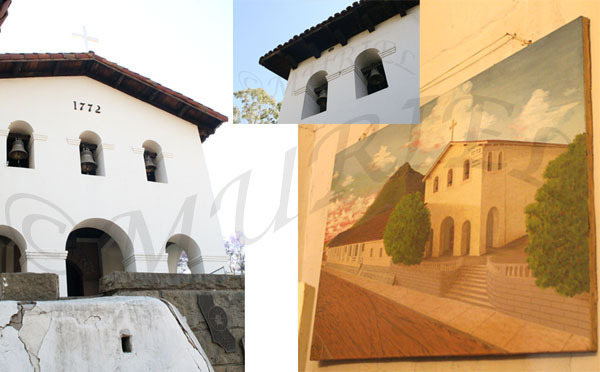
* You do not need to memorize for it says clearly that this
不用記了,就是1772 年成立得!
On September 1, 1772, Father Serra celebrated the 1st Mass with a cross erected near
1772 年九月一日, Serra 神父在聖路易司小溪邊立了個十字架,隔天就閃人 (不是啦,他還有其他傳道任務要處理) ,把所有的事交給 Cavaller 神父來完成。
我想 Cavaller 神父應該很辛苦,這麼大一座傳道院要蓋,聽說只有 5 位阿兵哥跟 2 位剛入教的印地安人幫他。
It took about 22 years for the present
雖然這個傳道院跟之前看的比起來,規模算是小很多,也大概花了 22 年的光陰,整體建築才算完成。
Like others, Mission San Luis went through several stages of prosperity, decline, secularization, earthquake, etc.
像大多數其他的傳道院一樣,聖路易司也經歷過盛衰、世俗化、與地震。
When the Mexican War for
墨西哥在 1810 年與西班牙決裂時,當時的加州傳道院多能自給自足,雖然沒有西班牙的經濟資助,靠著聖路易司傳道院原本的盈餘,也撐了數載。
* Olive Press in a display room – also in the display were washing machine, grinding tool, and metal tub. The whole community of priests, Natives and soldiers needed to produce goods for their own livelihood.
大概是壓橄欖油用的?展示館內還有其他當年的民生用具,幾本上神職人員、印地安人、及阿兵哥都必須致力生產。
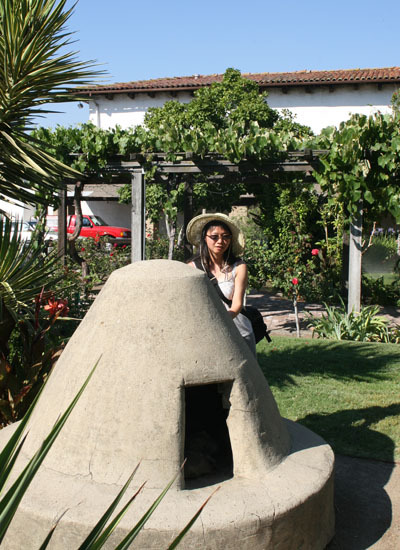
* This is a reproduction of a Chumash Indian oven. Many Chumash Indians were converted to Catholicism and helped build this mission.
這是印地安人 Chumash 族的烤爐 (複製品) - 太愛吃了,專挑跟吃得有關拍 。
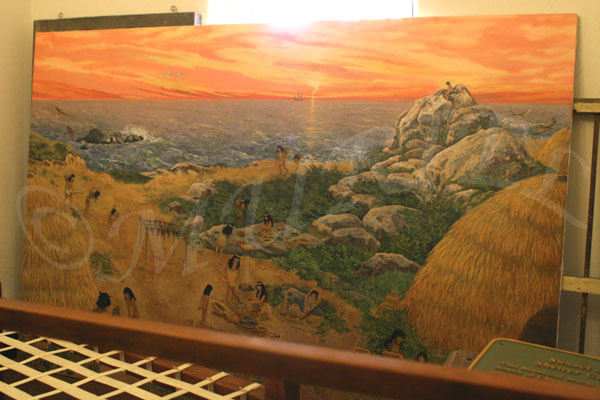
* Depiction of life then.
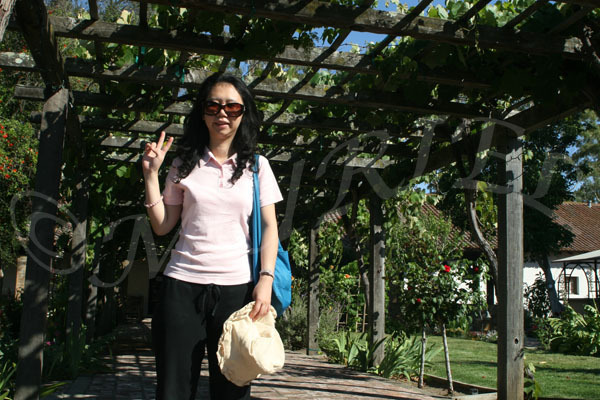
* This archway in the garden is covered with wine grapes.
花園內的葡萄藤
加州的酒很出名,但是您知道釀酒的傳統是源於傳道院嗎?第一座加州葡萄酒廠就在San Miguel 傳道院;又有藉口出去玩 . . .
After 1818, the
撐了幾年,在1818 年後,聖路易司傳道院開始走下坡。墨西哥贏了西班牙後下令所有傳道院改由政府管理,神父們不得插手;傳道院建築整體每況愈下,1845年政府首長 Pio Pico 把傳道院賣出時,竟只要 510 元。
After
後來加州正式成為美國一州;第一位加州主教 Joseph Alemany 請求政府把傳道院土地交回給教會來管理;聖路易司傳道院在1859 年重回神父之手時,幾乎是什麼也沒了!
Then, in 1868, the buildings were remodeled with white painted siding and used as a parish church for the flourishing town in the area. In 1872 renovation of Mission in New England style began - a
1868 年有一些整修加蓋;1872 年的重整還加了新英格蘭建築式的鐘樓。
In the 1930s Father John Harnett decided to transform and restore the buildings to early-mission style. Nowadays, the original padres' quarters become a museum.
到 1930 年代,John Harnett 神父決定要還它本來面貌 (西班牙風)。
當年神父的寓所現在已成為博物館。
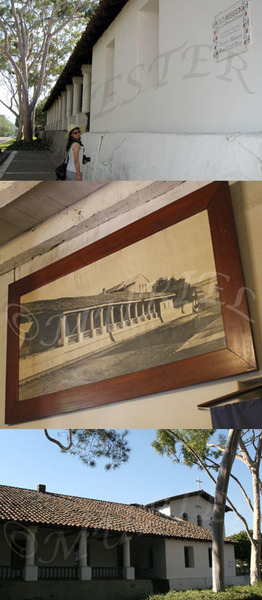
Most Missions close at 5 pm – by the time we arrived at SLO and actually found the
我們到達時已過四點 (多數傳道院開到 5 點) ; 我沒有仔細地看館內解說,只是一股勁拍照。
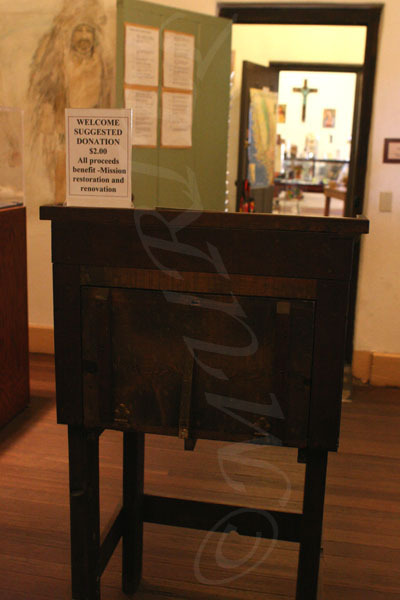
Our tour started at the museum (by the gift shop). Most Missions charge admission or parking fee but this one only asks for donation.
從禮品部旁開始晃,這個傳道院是不收費的,希望大家捐款幫助其維修。
* Label read: "Sewing was only part of the handiwork by pioneer women. Complicated patterns were made in handkerchiefs by separating the threads into lace-like designs. Loved ones were often remembered by making wreaths out of their hair."
說男人為了傳道院生計忙著,女人也沒閒著,編織是她們最拿手的工藝。
這是用頭髮編成的花環,害我開始想像把自己的頭髮編成花環,套在心愛人身上,好浪漫呀!(啥?髮質不夠好? &#%& 扯遠了呀? 喔!)
After the museum & gift shop closed, we wandered outside. It was hard not to notice the beautiful sounds of the bells. These 5 bells were new ones (2005) and named after the patron saints of the first 5 Alta CA Missions – Carlos, Diego, Antonio, Gabriel, and Luis. The bells could actually play melodies for they had different pitches.
在外面逛很難不聽到鈴聲 – 這 5 個鈴是 2005 年才掛上,每個鈴都有名字,紀念加州首五座傳道院聖者名 - Carlos, Diego, Antonio, Gabriel, and Luis。每個重量與音階都不同,可以奏出旋律。
覺得在傳道院廣場靜靜坐著聽,也是一種享受;可能當時太趕,心情沒放鬆,下次出去玩要放慢腳步。
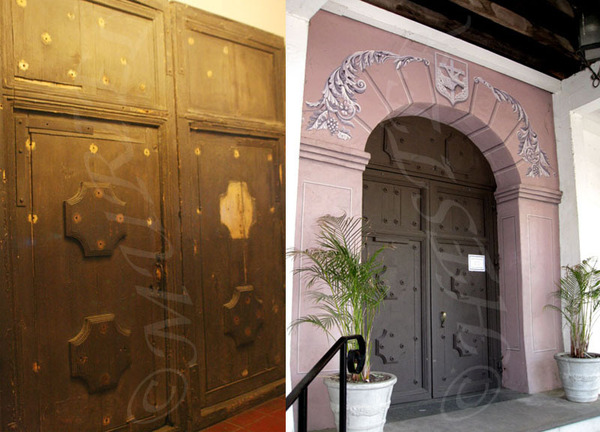
* (Left) original doors of the
(Right) current entrance to the church – with new artwork added on the door frame.
Because the church is under renovation, it is only open on the weekend. I could only show you the façade. (its website has more interior photos)
(左) 傳道院原本的門,放在博物館展示。
(右) 現今教堂入口,裝飾是新加的。
因為教堂內部平日整修,只有星期日開放,所以沒法拍幾張給大家看。
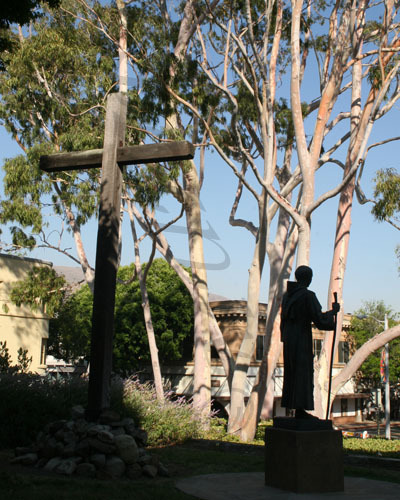
* A statue of Father Junipero Serra outside the Church entrance and a representation of the cross he erected in 1772.
教堂外有Serra 神父與十字架的雕像。
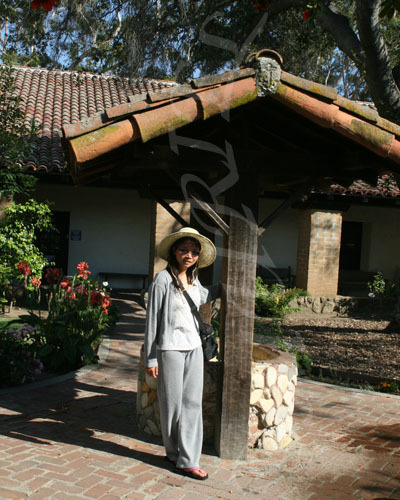
* Well in the garden.
花園內的古井。
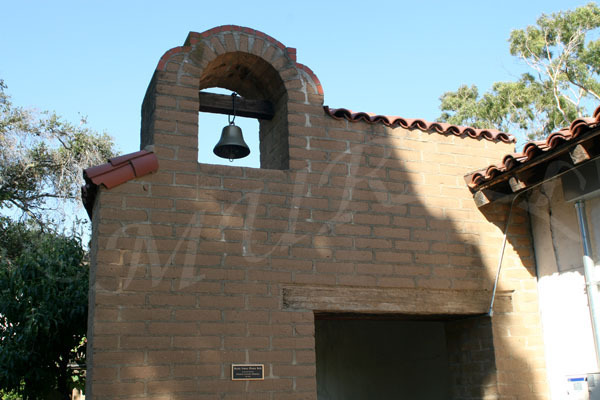
* This
這傳道院的鈴可真不少。
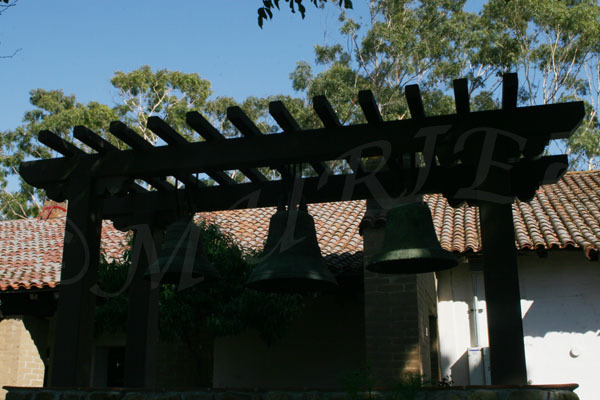
* Still 3 others in the garden.
還有!
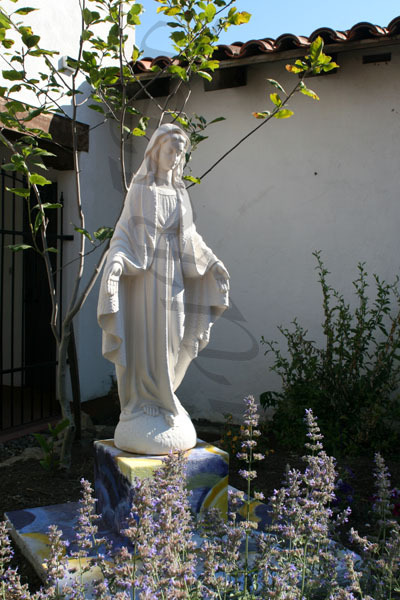
* Although not a Catholic nor Christian, I still feel this statue very peaceful and beautiful.
後園一角
這個傳道院取名自聖路易司主教;1998 年時傳道院把資訊放到網路上,有興趣的話請參考傳道院網頁 www.missionsanluisobispo.org
More photos 更多照片: www.pixnet.net/album/murielee84/13967221






 留言列表
留言列表
